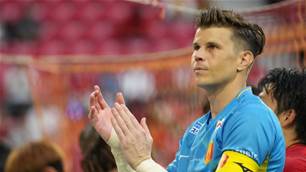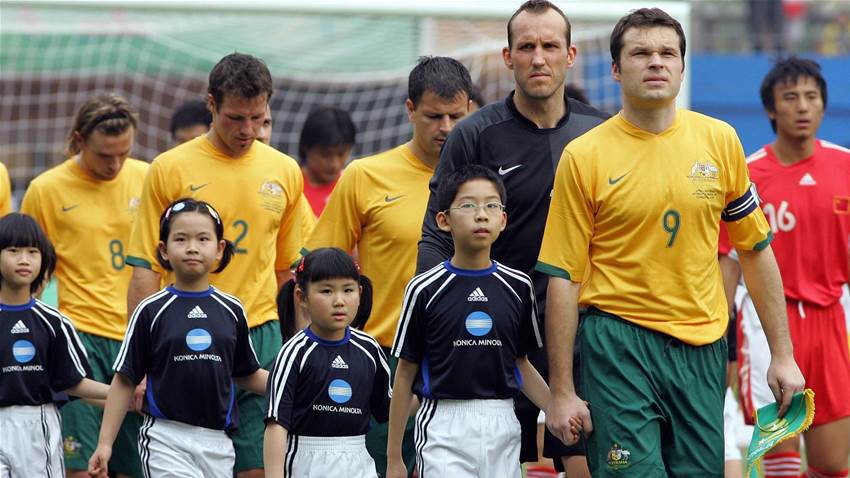On Tuesday, Professional Footballers Australia (PFA) released the results of a long study seeking to guide future development pathways.
Environment:
At the core of the study’s key findings was the change in environment experienced by young players.
Where the golden generation experienced a club experience that was at the core of their social existence – spending the majority of their junior careers at a single club that became almost a second home – today’s generation saw junior clubs more as a place that simply existed for structured football practice – something that you drove to, trained and left – and not as a key part of their identity.
Reflective of the changing nature of Australian coaching, today’s generation are more likely to be exposed to qualified and/or professional coaching at a young age and their experience at clubs ‘professionalised’.
In turn, this means that today’s players will often move from club to club in pursuit of greater opportunities or improved coaching rather than lay down roots.
In contrast, members of the golden generation were often guided in their early childhood years by parent coaches at their local, often ethnically backed, club.
These clubs served not just as places for structured football, but also as social forums where families congregated, and the golden generation engaged in unstructured, free play for hours at a time on the club’s empty pitches.
Practice:
When it came to practice, both generations highlighted the importance of both unstructured, free play activities in their development and revealed that they both experienced enjoyable, game-based training in structured club activities – the efficacy of which is underlined by research cited in the report.
The biggest point of difference surrounding practice came in the age of specialization demonstrated between the two cohorts.
Whilst the Golden Generation exhibited a much later specialization in football, today’s players are specializing in football at a much younger age – possibly due to the increasing professionalism and demands of modern, elite clubs or a lack of time and resources for today’s families.
Importantly, though, the study does not declare one approach better than the other, acknowledging that arguments exist for both approaches.
Pathways:
While both generations played up an age group during their formative years, the exposure to senior football for the Golden Generation was experienced earlier in their development than the current generation.
On average, members of the Golden Generation experienced senior football between the ages of 15-16 and largely did so in senior competitions – men playing against men. In the young players of today in the study between the ages of 16-18 and did so not as part of a senior side but, instead, as members of youth sides alongside boys.
Once promoted to playing alongside other men, the current generation reported a noticeable increase in speed and physicality.
Furthermore, the Golden Generation exhibited a tendency to move overseas at a younger age than the current generation, only one of whom had been surveyed had undergone a trial with a European club.
The study, however, cautioned against making sweeping generalizations based upon this finding: highlighting the semi-professional nature of the NSL against the professional opportunities afforded by the A-League and a 2001 FIFA ruling on international transfers of U18 players that restricted the potential for youngsters to move overseas.
What does it mean?
Ultimately, the PFA/VU study determined that the Golden Generation likely represented not the norm for Australian football but was, in its place, a result of a perfect storm of social, cultural and familial factors that worked to create a generation of players that saw Australia qualify for the World Cup for the first time in 32 years.
Importantly, the study also warned against taking the square peg that existed at the time of the Golden Generation’s birth and attempting to insert it into the round hole that is today’s cultural landscape.
As observed by the study, modern technologies such as streaming services that put the Premier League, Serie A, La Liga or Bundesliga at people’s fingertips, or social media accounts that allow youngsters to follow the glamorous lives of today’s top players on Instagram, Snapchat and Facebook cannot be un-invented.
Although Golden Generation players did observe that today’s players have access to greater resources then they did as players; advances in player welfare and sports science, that look after the person and not just the footballer, cannot be discarded to simply create a sense of scarcity.
Having highlighted the particular ‘inputs’ that led to the creation of the golden generation’s talents, or ‘outputs’, the study observes that there is now a need to develop within Australia new inputs that are culturally relevant and socially responsible as the world moves into the 2020s.
The report cites the example of how a Golden Generation player love for the game that was built around playing in the back garden was then fostered by a connection to a local, ethnic club where they would spend countless hours playing with a ball. This, in turn, created players adept at manipulating the ball.
Rather than simply trying to replicate the perfect storm of the past, though, the study instead highlights that the Australian game needs to find new ways to get players in love with the game and with a ball at their feet as much as possible – be it through clubs, apps, games or street football courts.
Such endeavours need to not just encourage play by the next generation of Australian talent; but also take into account trends in housing, technology, immigration, family, employment and access to transportation.
As the study puts it, “We should not limit our scope to what has worked here in the past or elsewhere in the present. To do so would be to attempt to keep up, rather than get ahead. To regain a competitive advantage, we should get creative and consider new and innovative ways to produce the outputs we want.”
Related Articles
.jpeg&h=172&w=306&c=1&s=1)
Socceroos prodigy returns to A-League after horror run

Star keeper's exit heralds hero's return at A-League giant













